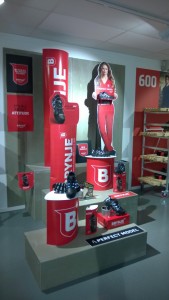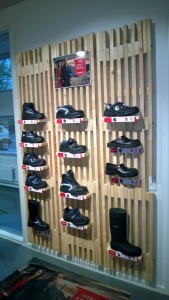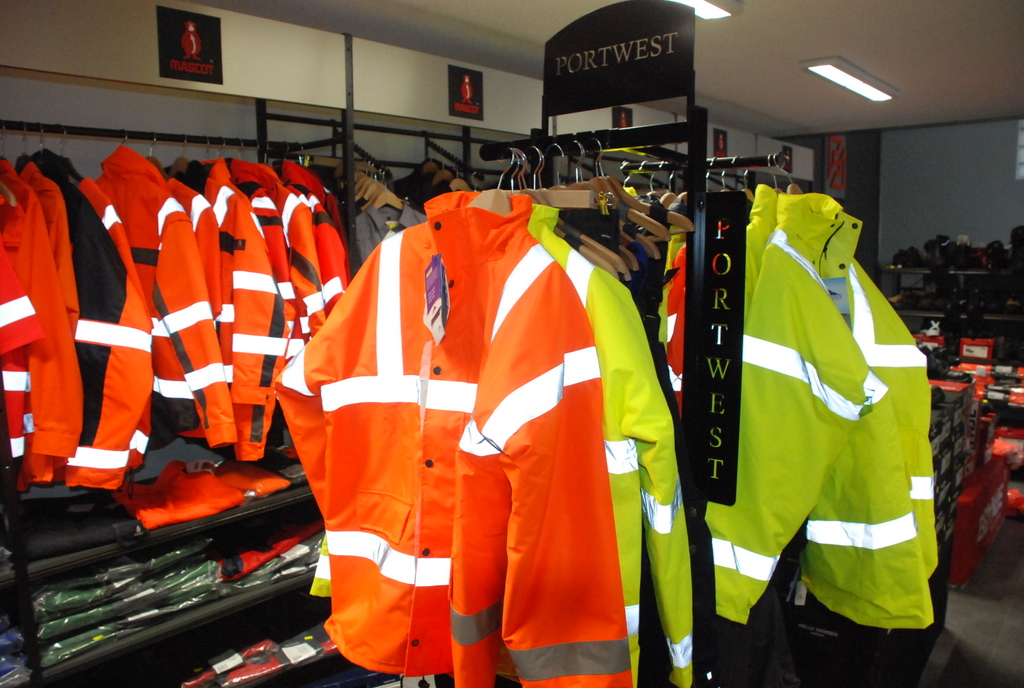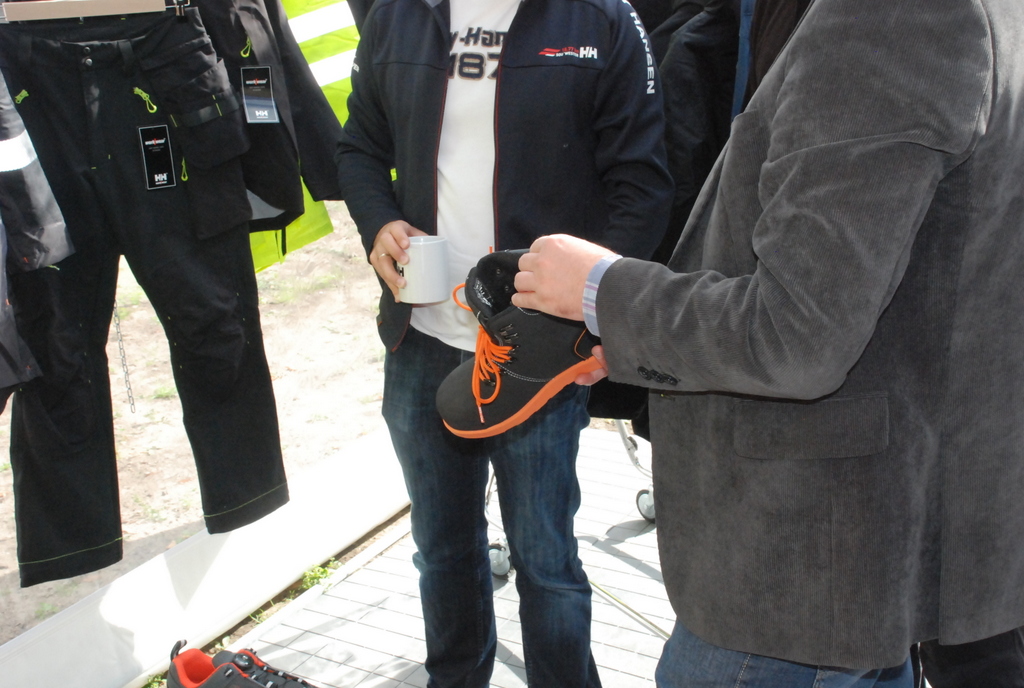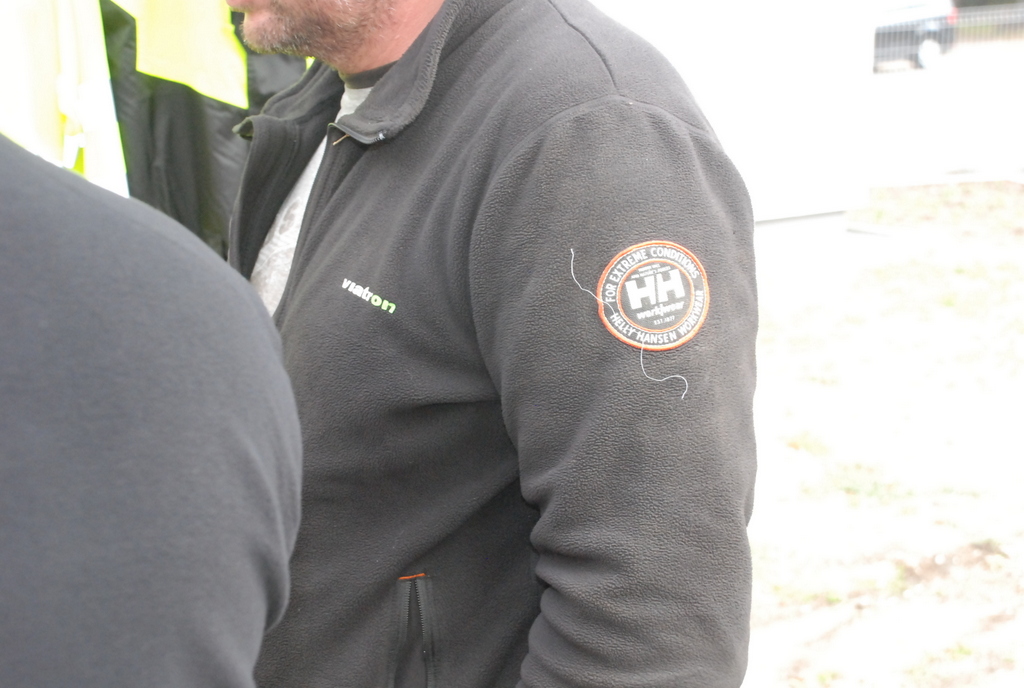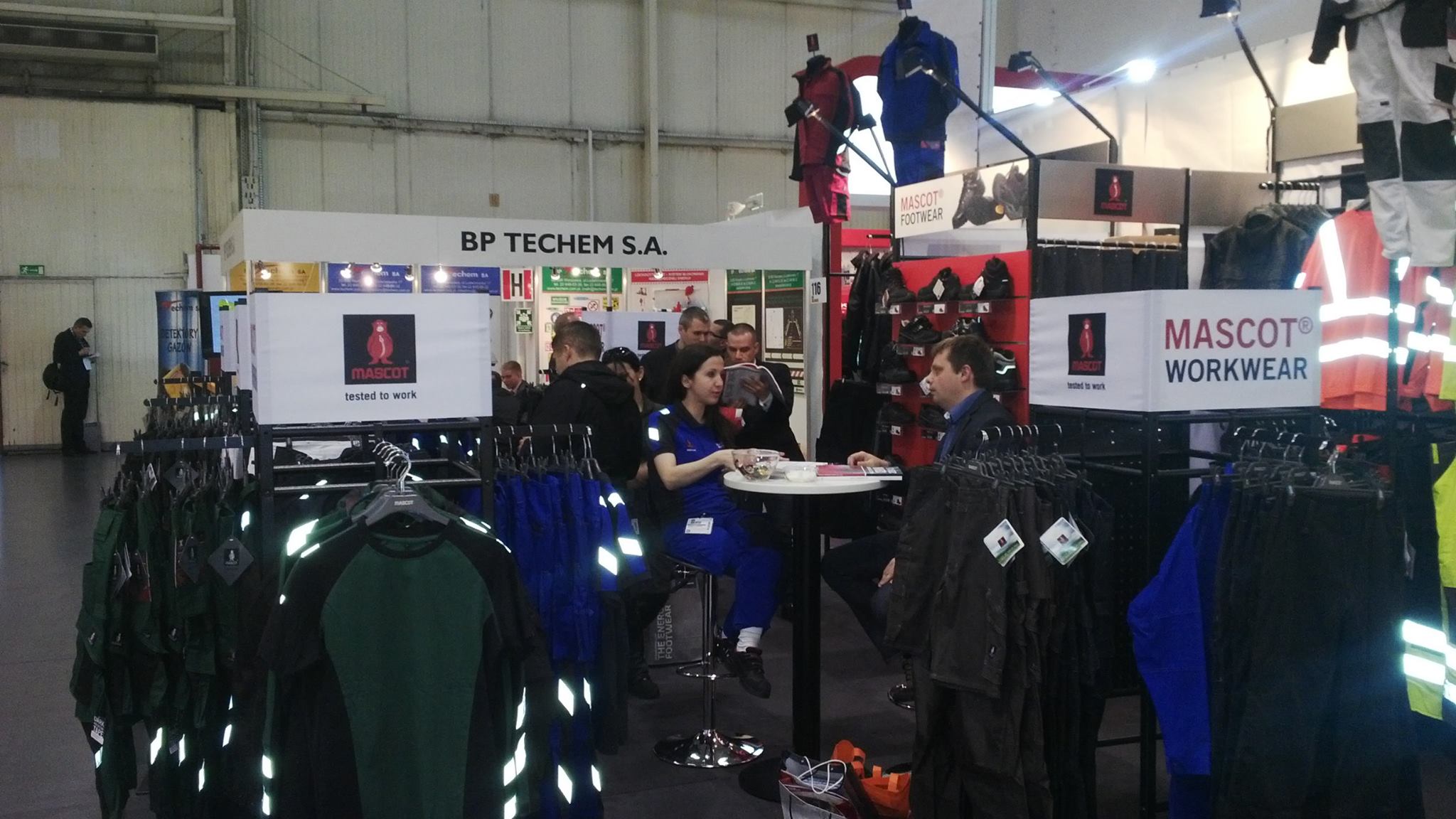Alle Artikel von Safety WorkWear
(Polski) Dzień Otwarty Nowego Sklepu BHP
(Polski) Otwarcie nowego sklepu
XXVIII BARZKOWICKIE TARGI ROLNE
MASCOT® SAFE SUPREME
Ab Herbst ist die neue Generation Warnschutzkleidung von MASCOT verfügbar. Die MASCOT® SAFE SUPREME Kollektion ist gespickt mit einer Vielzahl an funktionalen Details und ermöglicht die passende Ausstattung für jede erdenkliche Arbeitssituation, zum Beispiel auch im Hoch- und Tiefbau, wo der Kleidung alles abverlangt wird.
MASCOT® SAFE SUPREME bietet anspruchsvolle Workwear mit der vollen Sicherheit – zertifiziert nach dem neusten Standard EN ISO 20471 und verfügbar ins sechs zweifarbigen Kombinationen in fluoreszierendem gelb, orange und rot und mit schicken dunklen Kontrastfarben dort, wo die Produkte am meisten Schmutz ausgesetzt werden.
Extrem hohe Strapazierfähigkeit
MASCOT® SAFE SUPREME ist Arbeitskleidung für höchste Anforderungen, entwickelt mit dem Anspruch, die besten Produkte im Segment anzubieten. Bereits beim Material treffen bester Komfort und größte Strapazierfähigkeit aufeinander. Das Polyester-Baumwoll-Gemisch wurde so verarbeitet, dass die weiche Baumwolle auf der Innenseite und das robuste Polyester auf der Außenseite liegt. Verstärkungen aus CORDURA®-Gewebe sind an den besonders beanspruchten Stellen wie Taschen, Knien und den Ärmelenden angebracht. CORDURA®-Gewebe ist siebenmal stärker als Baumwolle und sorgt dadurch für extra Strapazierfähigkeit. Dreifache Kappnähte an den Beinen und im Schritt sowie eine schmutzabweisende Teflonbehandlung für langanhaltende Sichtbarkeit tun ihr Übriges, um die Lebenszeit der Produkte zu verlängern und machen sie so auch besonders wirtschaftlich.
Neue Produkttypen
Völlig neue, flexible Oberteile kommen nun mit EN ISO 20471-Zertifikat im Hinblick auf verschiedene Jahreszeiten und unterschiedliche Umgebungstemperaturen, z.B. Thermojacke, Thermoweste, gesteppte Kapuzenjacke und Softshelljacke. Die Shirts und Sweatshirts der Kollektion sind ebenfalls von höchster Qualität und Funktionalität, durch elastische Reflextreifen auf elastischen Materialien machen sie jede Bewegung mit.
Für alle Mitarbeiter
Um die gesamte Belegschaft perfekt auszustatten, kommt die Kollektion in einem breiten Größenspektrum. Hosen werden standardmäßig in drei verschiedenen Schrittlängen angeboten und in bis zu 17 Konfektionsgrößen pro Schrittlänge. Außerdem kann man die Schrittlänge der Hosen einfach selbst um drei Zentimeter zu verlängern. Für diesen Zweck liegt auf der Innenseite der Hose eine spezielle rote Naht, die z.B. mit einem Messer leicht aufgetrennt werden kann. Die kürzeste Schrittlänge kann selbst noch einmal um 3cm gekürzt werden, ohne dass die Warnschutz-Zertifizierung verloren geht. Das ergibt Schrittlängen von 73cm bis hin zu 93cm, so dass wirklich jeder Hosen bekommen kann, die perfekt passen und bei denen die Knietaschen immer an der richtigen Stelle sitzen.
Sicher mit zertifizierter Klasse 3
Die Norm EN ISO 20471 ermöglicht ausdrücklich die Kombination von Bekleidungsteilen zum Erreichen einer höheren Warnschutz-Klasse. Um das einfach und sicher im Alltag anwenden zu können, hat MASCOT ein eigenes, vom Prüfinstitut anerkanntes System mit Kennbuchstaben entwickelt. Das vermeidet Unsicherheiten, da auf den ersten Blick deutlich wird, welche Kombinationsmöglichkeiten es gibt – zum Beispiel ein Poloshirt der Klasse 2 und eine Hose der Klasse 1 zum Erreichen der höchsten Klasse 3. So sind Sie und Ihre Kollegen jederzeit auf der sicheren Seite.
Zahlreiche Kombinationsmöglichkeiten mit anderen Produkten
MASCOT® SAFE SUPREME erzeugt einen professionellen und markanten Auftritt für Ihr Unternehmen. Durch modernes, ergonomisches Design gepaart mit durchweg funktionalen Details hebt sich die Kollektion deutlich von der Masse ab. Die Produkte vermitteln durch die Anordnung der Reflexstreifen zusammen mit den kontrastfarbigen Einsätzen sportliche Dynamik und transportieren die hohen Ambitionen der Kollektion auch visuell. Alle Farbtöne sind über das gesamte Sortiment hinweg abgestimmt, so dass Kombinationen mit über 600 anderen MASCOT-Produkten, z.B. aus der MASCOT® HARDWEAR Kollektion, problemlos möglich sind.
Bitte beachten Sie unsere zahlreichen kurzen Detailvideos der neuen Produkte und verschaffen Sie sich einen ganz persönlichen Eindruck der MASCOT® SAFE SUPREME Kollektion.
Press release: Mascot International A/S
(Polski) Firma rodzinna
(Polski) A+A 2015

LIFA® Stay Dry Technology
Technology LIFA® Stay Dry
Anyone who participates in variable-intensity outdoor activity has experienced being cold on the mountain. Usually people are warm while hiking, but get cold once they stop. This is because their sweat was absorbed by their cotton or polyester baselayer and remained next to their skin. Since our bodies lose 25 times more heat when wet, they get cold. So the key to staying warm is staying dry, and nothing keeps you drier than Helly Hansen baselayers, made with LIFA® Stay Dry technology. Guaranteed!.
While most baselayers are made from either polyester or wool, Helly Hansen is the only company that makes their baselayers from LIFA®. In fact, we’ve been using LIFA since we invented the first performance baselayer back in 1970. Even though our production processes and technologies have evolved over the past 35 years, we still use our proprietary LIFA Stay Dry Technology – that’s what makes our baselayers outperform all of our competitors.
Why use LIFA®?
There are many reasons why Helly Hansen uses our own proprietary LIFA® fabrication. LIFA is:
Hydrophobic. It retains 40 times less moisture than polyester. Simply put, LIFA moves moisture through the garment instead of absorbing it. And since the fabric won’t absorb water, it will always be dry against your skin.
Lightweight. LIFA is 50% lighter than polyester, and 70% lighter than wool.
Anti-bacterial. LIFA has a natural resistance to bacteria. Because of this, it has no odor retention.
Hypo-Allergenic. LIFA is non-itching – even when combined with wool, having LIFA next to your skin provides a zero itch factor.
How Does LIFA® Wick?
Most baselayers work by “wicking”. Fabric absorbs moisture and spreads (or wicks) it across a greater surface area so it can evaporate more quickly. But this leaves wet fabric against the skin, stealing body heat 25 times faster than dry fabric. Since LIFA® can’t absorb water, it can’t wick moisture. Instead, it uses body heat as a catalyst to push sweat vapor THROUGH the garment to a second layer (i.e. fleece), where it is absorbed and wicked for evaporation. LIFA fabric will always stay dry next to your skin.
More info: http://www.hellynewengland.com/lifa/
E-textiles improving health and safety
It’s never been easier and cheaper to sew small electronic components into wearable clothing.
In this issue of Futuris, we are diving into the world of smart textiles that help improve health and safety.
On a small fishing boat crossing a fjord near Trondheim in Norway the nets have to be checked for the overnight catch.
Eldar has been a professional fisherman for over 40 years.
It is one of the riskiest jobs, thousands of fishermen around the world lose their lives every year – mostly by falling overboard and drowning.
“When the weather is bad, when there’s strong wind, it’s easy to fall overboard. That happened to me, and to some people I knew who didn’t survive,” said Eldar Aukan.
“It’s easy to fall out, and very hard to get back – your clothes get heavy when they’re wet, and the water is very cold,” he added.
The fisherman has a manual remote control to stop the boat’s engine in case of an accident. Eldar has to remember to carry it with him at all times.
He also needs some means to alert rescuers and help him stay afloat if he falls overboard.
Integrating electronics into the protective outfit can make all these emergency tools wearable and impossible to forget.
At Trondheim’s swimming pool scientists are testing the first prototype of a smart safety vest, developed as part of a European Union research project.
It has sealed sensors that trigger a number of life-saving measures in case of an accident, including an inflating buoyant ‘lung’ and an alarm.
Hilde Færevik, Coordinator for the SAFE @ SEA project, demonstrated the vest: “You can see here on my colleague – he has the lung integrated here – it’s expanded, and on the top of the lung you have the “man overboard” alarm. Of course, a main topic of the project has been how you can integrate this electronics into the material.”
The design took a lot of research. The sensors need to be correctly placed to distinguish a submersion into the sea from an accidental splash of water or rain, and the inflatable “lung” has to keep the head safely above the water even in strong waves.
The smart outfit has an automatic radio transmitter that sends a short-range distress signal to the receiver unit onboard. That allows the system to stop the boat, alert the crew and send the coordinates to the rescue services.
“It’s the intention that the receiver unit is mounted high on the mast of the boat,” said Håkon V. Døvre, Power Electronics Engineer from Delta Alarm.
“The signal from the victim will then radiate in all directions and will be picked up by the antenna here. It also has a GPS antenna that can send the information to the emergency centre.”
Making the technology reliable is not enough, the protective outfit needs to be comfortable to work in and easy to clean – or else fishermen will not use it.
“This is a first prototype, it’s kind of big now, it will be smaller and more flexible, just a comfortable part of the whole clothing – so that the fisherman will not notice that it is here actually,” added Hilde Færevik.
To ensure better functionality, comfort and safety, the fabric for the next generation of fishermen’s protective clothing needs to be reinvented.
That is a task being undertaken at the SINTEF chemical lab.
The materials the scientists are working on are made from a unique coating that makes it not just water-repellent but also self-repairing.
This compound contains microcapsules with a chemical that fixes scratches, making the protective outwear last longer.
Stephan Kubowicz, a Polymer materials scientist working for SINTEF, explained: “If you damage the coating, you also break the capsules, and what’s inside the capsules – a kind of healing repairing agent – comes out and closes the gap, and the coating is again like new.”
Smart textiles can save lives at sea but the fabrics can also help at home.
Researchers in Eindhoven have found a way to use blue light-emitting diodes to relieve back pain. The result is an innovative consumer product that is becoming available commercially.
“The 40 LEDs are mounted on a piece of material. The device is very flexible, very bendable and that the strap with the patch inside will follow your body form,” said Gregor Jelen, Product Manager at Philips Lighting.
The blue light stimulates production of nitric oxide in the skin, relaxing the muscles and improving the blood circulation, which results in pain relief.
The effect is enhanced by the heat radiated by the light-emitting diodes.
An infrared sensor is used to prevent any risk to skin or eyes. The developers say the device is absolutely safe to use at home, as it does not emit any harmful UV radiation.
Large-scale clinical studies are underway to measure the exact healing power of the technology.
Safety and comfort were a priority for the designers who find great creative potential in e-textiles.
Rogier van der Heide, a Lighting Designer at Philips Lighting, said: “There are still challenges in the application of LED in fabrics, but it’s getting easier and easier. Batteries are still a little bit large, and have a limited operation time, controls of LEDs have to become sturdier, more reliable. But we are working at it, and we’re getting there.”
The technology – developed as part of an EU-funded project – is easily compatible with existing production lines.
This helps make the production of textile-based electronics cheap and easy. Pieces of fabric go through the same machines that usually process traditional circuit boards.
Heat can damage the synthetic fibres. So instead of soldering, conductive glue is used to attach the light-emitting elements to the thin copper wires interwoven in the fabric.
As LEDs are quite efficient, a compact battery can ensure several treatment cycles between recharges.
Koen van Os, a Coordinator for the PLACE-IT project, says there are no safety worries: “Here you see our device which has been built of low-power electronics, it’s not a high voltage, it’s low current, so it’s absolutely safe to wear that close to your body.
“Because of the price drop recently – and it’s a process that has been going on for years already – it is becoming much more feasible to make large-area lighting devices based on LEDs.”
With their countless applications, electronic textiles are making lives better on so many levels – health and safety is just two of them.









